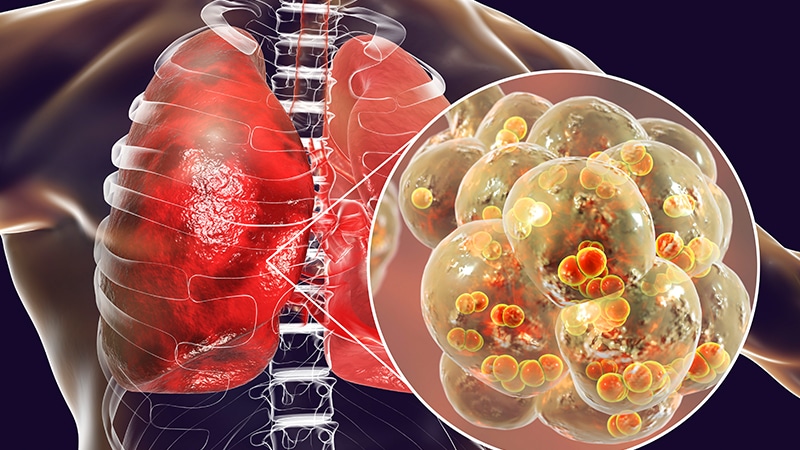This transcript has been edited for clarity. For more episodes, download the Medscape app or subscribe to the podcast on Apple Podcasts, Spotify, or your preferred podcast provider.
Tania Jain, MBBS: Hi, everyone. I'm Tania Jain, and I welcome you all to season 1 of the Medscape InDiscussion podcast series on myelofibrosis. Today we'll discuss the natural history of and risk stratification in myelofibrosis with our guest, Dr Pankit Vachhani. Dr Vachhani is an associate professor of medicine at the University of Alabama at Birmingham (UAB). At UAB, he's involved in multiple clinical trials as principal investigator. He leads the Leukemia Transplant Working Group and is the medical director of the clinical research unit at UAB. His primary research interest is in hematologic malignancies, particularly myeloproliferative neoplasms and acute myeloid leukemia, where he focuses on developing novel and experimental therapeutics. Welcome to the Medscape InDiscussion podcast. How are you doing today, Dr Vachhani?
Pankit Vachhani, MD: Thank you, Dr Jain. I'm doing well and am delighted to be here with you doing this first podcast of the series. I'd like to say a nice and big hello to our listeners.
Jain: Wonderful. Thank you. Yes, we're very excited about this series. We don't have a lot out there for myelofibrosis, so we're excited to get this rolling. You spend a lot of time thinking about myelofibrosis and taking care of patients with myelofibrosis. One of the things that we often think about is the natural history of this disease and how to risk-stratify patients with this chronic myeloid malignancy. We live in a bit of an embarrassment of riches at this point, with several risk-stratification models that are out there. Could you shed some light on the merits and pitfalls of the different models? What is your practical approach? How do you use the International Prognostic Scoring System (IPSS), the Dynamic International Prognostic Scoring System (DIPSS), the Mutation-Enhanced International Prognostic Score System (MIPSS), and the alphabet soup that continues to grow?
Vachhani: Yes, we do live in an era where we have so many different risk-stratification tools. When I see a patient and they ask about their diagnosis and what it means, I tell them first that myelofibrosis is a blood cancer. It's a neoplasm. Unlike solid tumors where we do staging, we don't do staging of myelofibrosis, mostly because it's a blood cancer. It's everywhere from day 1. You brought up some of the many different risk-stratification schemes that are out there. There were a few which were in existence in the previous millennium. We won't even go over there.
We'll start with IPSS, the first one that you brought up — the International Prognostic Scoring System, which was published in 2009, meaning it was developed in an era before JAK inhibitors. In fact, that's a key point to mention; most of these risk-stratification schemes use data from patients who didn't get the JAK inhibitors that we now routinely use. What's the impact of JAK inhibitors on the risk-stratification schemes? We don't fully know, perhaps, and most likely it is different. IPSS was developed in the late 2000s, published in 2009, and it takes into account five different items: age being more than 65, hemoglobin of less than 10, white count of more than 25, peripheral blood blasts of 1% or more, and constitutional symptoms. This risk-stratification scheme was developed in a way that you would take these five factors at the time a patient was diagnosed with myelofibrosis and use a calculator. You put these five variables into that calculator and prognosticate into one of four myelofibrosis groups: low risk, intermediate-1, intermediate-2, and high risk. That was the old way of doing things. Then we understood that anemia or hemoglobin of less than 10 actually had more prognostic implications compared with some of the other points, and that led to the successor of IPSS, which is DIPSS.
DIPSS gives slightly more weight to anemia, but all five points are the same. This is probably one of the most used risk-stratification schemes out there because it's simple to do. We have most of these items available on any given day if you see a patient in the clinic. We have done a complete blood count, we know the age, and we know the constitutional symptom status. Even more knowledge led us to understand that not just having anemia, but actually requiring transfusions, is probably a worse thing — meaning, it weighs even more than just having anemia. We also understood that having low platelets or thrombocytopenia, defined as platelets less than 100, is an additional risk factor. We also understood that having unfavorable karyotype — meaning chromosomes which are abnormal, especially some of those abnormalities — are also an independent risk factor.
The three points that I just mentioned, which is the requirement of transfusions, chromosomal abnormalities or unfavorable karyotype, and thrombocytopenia, were then incorporated into the DIPSS model. This led to the generation of the third model, which is the DIPSS-plus risk-stratification model. I like to use this model if karyotype is available, and I would suggest doing that if one has it available. As you and I know, many times we don't have karyotype information available because there was a dry tap or various other reasons.
Before we go further, I do want to make a couple of additional points. One is a point about constitutional symptoms. I think it's important to review that fatigue is not a constitutional symptom. It is a symptom but not for these risk-stratification schemes. What counts as a constitutional symptom is weight loss of more than 10% in the previous 12 months or unexplained fevers or excessive sweats, daytime or nighttime, over the previous month or more.
When we take these three risk stratifications, all three of these give us a constitutional symptoms score, which then leads to a four-tiered risk stratification.
The common theme among all three risk-stratification schemes is that the low and intermediate-1 risk strata together count and constitute the lower-risk stratification for myelofibrosis, while intermediate-2 and high-risk myelofibrosis constitute the higher risk stratification for myelofibrosis.
What's the difference, then, between the lower- and higher-risk myelofibrosis? The difference, simply put, is that median survival or, maybe if we can extrapolate that word, the average survival for the lower-risk myelofibrosis patients, is more than 5 years. For higher-risk myelofibrosis, it's less than 5 years, meaning there's more acuity. There's more that we need to do and probably more urgently. We'll come to the transplant point maybe a little bit later.
These are the three models that were used for a long period of time, and then came along some additional models.
There was the GIPSS, or genetically inspired IPSS, risk-stratification model. This one is quite simple. It considers just the molecular gene mutations, which I think almost all of us obtain from peripheral blood or bone marrow samples. Either sample could be used. It takes into account the samples and the karyotypic abnormalities. In some ways it's very easy to use. However, we don't really use this so often in practice because we don't know the time point at which we should be using this risk-stratification model. And, as we previously mentioned, not everyone has cytogenetics available on day 1. We have the molecularly inspired IPSS risk-stratification models, MIPSS. These were developed about 5 or 6 years ago. In fact, they are the recommended risk-stratification models to use.
The first and foremost was MIPSS70. The goal here was to develop a risk-stratification model for patients who were potentially transplant eligible, those who were less than the age of 70 years or so, and to develop a risk stratification using molecular mutation data. That was good. It led to the use of six clinical risk variables, some of which we already talked about, like hemoglobin, white count, platelets, circulating blasts, but also bone marrow, fibrosis, constitutional symptoms, and a few mutations. There were five high-molecular-risk mutations that were incorporated: ASXL1, SRSF2, EZH2, IDH1, and IDH2, and one favorable mutation, which is a CALR type 1 or type 1–like mutations. That was developed first. It led to a three-tiered risk stratification. Subsequently, a MIPSS70+ version was also released, almost simultaneously. This took into account many of the same mutations but only three clinical risk factors. However, it also added karyotypic information. That led to the MIPSS70+. This is a four-tier risk-stratification scheme.
And finally, as an update to that, we have the MIPSS70+ version 2.0. If you have the availability and the information of all the mutations, karyotype, and all of that, please use the MIPSS70+ version 2.0. What's the difference between this and the other MIPSS models that we talked about? First, it distinguished the karyotypic abnormalities, not just as unfavorable karyotypes but the very high-risk karyotypic abnormalities. It put more emphasis on those. It also identified and used a new mutation that was then discovered, which is a U2AF1, specifically the Q157 mutation, as an additional high-molecular-risk mutation.
Last but not least, it also used new sex- and severity-adjusted hemoglobin parameters. Let's keep in mind that most of these were made using the datasets which had primary myelofibrosis patients. What about patients who had essential thrombocythemia before or polycythemia vera before and now have progressed to a secondary myelofibrosis? Well, for years and years we had been using the available risk-stratification schemas, like DIPSS, to risk-stratify those patients.
I want to state this in case anyone wants to do this: There's a risk-stratification model called MYSEC-PM (Myelofibrosis Secondary to PV and ET – Prognostic Model). That's designed specifically for secondary myelofibrosis patients who, as a group put together, have better outcomes compared with the primary myelofibrosis patients.
All of these things are available as calculators. It makes life easy. Just do an online search; you will find a calculator to use. In those scenarios, especially secondary myelofibrosis, I would use that. In addition, Dr Jain, there are a couple more risk-stratification models that are available.
May I ask you about the MTSS model, which is the Myelofibrosis Transplant Scoring System? In which scenarios would you suggest doing that?
Jain: Let me first applaud your summarizing the risk scores so nicely. We all use them all the time, but I never think of them in a sequence, and that really helps to consider the evolution and how much we've learned. I always point out that these are guidance metrics. These models are not perfect, right? I think the best thing that we get out of these models, each of which has its own perfections and imperfections, is a better understanding of what matters in terms of prognosis. It can help determine what factors tell us that this chronic myeloid neoplasm has a faster pace to it in terms of progression to leukemia vs not. It's always intriguing to me that splenomegaly, which is a big manifestation of this disease, and which I cannot imagine is not a biological marker of disease severity, is not included in any of these. We'll come back to response to ruxolitinib after 6 months (RR6) in a little bit, but the baseline screen size of the spleen or the spleen size at any given time itself is not included.
You asked me about what model to use for transplant, so I will say that the most validated risk score in the context of transplant decisions is still DIPSS. The big study that was done, by our former colleague and friend, Dr Krisstina Gowin, and which is published in Blood Advances using CIBMTR data, still used DIPSS information and stratified transplant vs nontransplant outcomes based on low, intermediate-1, intermediate-2, and high DIPSS score. I will confess that I use DIPSS and DIPSS+ most commonly, with incorporation of molecular data, whether it's in the context of the MIPSS scoring system. It has its merits for sure but certainly does not include, for example, p53 or RAS mutations, which we know drive the prognosis in a certain direction, and usually the worst prognosis direction. The transplant model, the Myelofibrosis Transplant Scoring System (MTSS), includes some of the transplant variables as well, which is helpful and novel. I think those data continue to get updated in terms of what donor outcomes look like. As you know, the recent analyses of donor types in myelofibrosis, which is a manuscript in process, did not show a difference between mismatched donors and matched unrelated donors, which is something that was included in the MYSEC scoring. Dr Roni Tamari also published a prognostic scoring system in patients undergoing transplant, with the joint effort in Blood Advances last year.
Despite its limitations, there is a meaningful use to it in the context of what's low risk, intermediate risk, and high risk. It includes age, hemoglobin, and donor type as factors.
I will come back to the point about spleen. Maybe I'll ask you to comment about RR6 here, and how that change or response in the spleen may or may not matter in terms of how we prognosticate patients or outcomes in the context of myelofibrosis.
Vachhani: I want to emphasize a point that you mentioned, and I fully agree, which is that we should not get too married to any of these risk-stratification schemes, especially with the answer of any of these risk-stratification schemes for your given single individual patient who is in front of you.
This is guidance. These are suggestions of what may happen, but every individual patient is different. The other point that comes up is what to do when there is a discrepancy. Sometimes one risk-stratification scheme might suggest that a patient is a lower-risk myelofibrosis patient. Another one might suggest a higher risk. A third one might suggest in-betweenness. Or sometimes the variables that we put in might be different on a given day compared with a week before or a week after. We should be careful in how we use it.
The point where it becomes very important is transplant candidacy and the time to transplant. We want to make sure that the high-risk myelofibrosis patients are getting transplant evaluations and early transplants. To that point, Dr Jain, you brought up the RR6 model, and I think that's a very good one to bring up because once again, every individual patient behaves differently, irrespective of what the risk-stratification scheme might tell you or suggest to you.
The RR6 model, which stands for response to ruxolitinib after 6 months, is from a group of investigators from Italy and was validated by a cohort from Moffitt in Tampa, Florida, using an in-perspective study. The study was part retrospective and part prospective. They set out to understand as many factors as possible, but they ended up with three factors that are easily available in the clinic for us to judge our patients on, after they have been started on a JAK inhibitor.
Explained differently, irrespective of what their risk stratifications may have been at the original time of diagnosis, once they have been put on ruxolitinib, a JAK1/2 inhibitor, and 6 months have passed by, what could suggest to you that they are doing well, or bad, or which way they are going?
What they found was that the need for transfusions — let's say even at baseline or 6 months — was indicated by a less-than-impressive spleen length reduction. They came up with 30% cutoff, but I think what we should take home is that in spleen length, size reduction matters. The third factor is a ruxolitinib dose of less than 20 mg twice daily. If you have these three factors and you can use the RR6 model, and risk-stratify patients into one of three groups — low risk, intermediate risk, or high risk — it gives you a new baseline or a new time point to risk-stratify patients to see how they are doing after 6 months (roughly speaking there) on a JAK inhibitor. This has been validated even in a retrospective study to understand whether patients could be referred early for allogeneic stem cell transplant.
We don't know for sure, but possibly one could understand whether some additional drugs could be added for patients who are not doing so well — maybe adding other JAK inhibitors or transplant candidacy. We ourselves are understanding more in the field in terms of molecular mutations. A few years ago, we didn't fully understand which mutations were bad and in what context. Then we identified a few of them, but now we are understanding more of it. We know, for example, that the ASXL1 mutation is a high-risk mutation to have. But we are now understanding even more that maybe its negative impact is primarily driven in the primary myelofibrosis setting, not the secondary myelofibrosis setting. We are understanding that having the ASXL1 mutation is probably bad if it comes along with other high-risk molecular mutations, not as an individual entity.
A lot more needs to be understood in terms of how these risk-stratification models behave in a pure JAK inhibitor setting, or hopefully in the future, a treatment stage where we are using combination therapies. That's something that needs to be seen. This field will definitely evolve over time.
Jain: We're drawing to a close, but I cannot let you go without talking about prefibrotic myelofibrosis. Dr Vachhani recently wrote, with a team from MD Anderson, a beautiful review on prefibrotic myelofibrosis, which I do encourage people to read. Could you tell us how you think of prognostication in prefibrotic myelofibrosis?
Vachhani: Absolutely. Prefibrotic myelofibrosis is a distinct myeloproliferative neoplasm, according to the previous few World Health Organization classification schemas, but especially starting in 2008 and then in 2016 and 2022, the latest one. Simply put, its outcomes are somewhere in between those for essential thrombocythemia and overt myelofibrosis.
Let me just start by saying that there is no risk-stratification schema that has been made directly from a prefibrotic myelofibrosis patient population that is directed just to them and that has been validated.
That's something that we need in the field more, and we need it with the newer therapies that are coming and the practices that we currently use. That said, IPSS is the one that has been used most commonly for prefibrotic myelofibrosis patients. Interestingly, intermediate-1 and intermediate-2 patient outcomes really didn't differ. In fact, their median survival exceeded 10 years. We should be a bit careful in prefibrotic myelofibrosis when we use the IPSS risk-stratification model and not subject these patients to more aggressive therapy. I'm referring especially to allogeneic stem cell transplant, prematurely or unnecessarily.
Knowing these caveats is important. Could one use the MIPSS70 models for this? Perhaps, yes. In fact, there were some patients in the MIPSS70 database, about 197 out of around 700 patients, who had low-grade fibrosis, so not the category 2 or 3, but they had 1. Yes, one could use MIPSS70. It's not very well validated in this scenario of prefibrotic myelofibrosis. My suggestion here is to use the IPSS, and if you want, maybe the MIPSS70 or 70+ models. One more thing that I do want to say about prefibrotic myelofibrosis is that our day-to-day issues for these patients are more about thrombosis prevention or preventing hemorrhagic complications.
One may want to use the International Prognostic Score for Thrombosis in Essential Thrombocythemia (IPSET-t) or the revised IPSET-t models. That's risk stratification in some ways for the thrombosis part of prefibrotic myelofibrosis, not the overall survival part. Conceivably, you could have a patient who is at high risk for thrombosis by the revised IPSET-t model but has an overall low risk for prefibrotic myelofibrosis from an overall survival standpoint. We should keep these two distinct points in mind when we re-stratify. That's the short answer, Dr Jain.
Jain: Perfect. I'm looking forward to when we know the genomics and the cytopenias enough to use a simple 1 + 1 model to help guide our decisions. Clearly that's not going to be a reality, but I appreciate your time. I think this was a wonderful discussion.
I learned a lot and I hope our listeners did, too. We will now end this session and get ready for episode 2, on the current landscape of treatment, with Dr Lindsay Rein. Thanks again, Dr Vachhani. I really appreciate your time.
Resources
Primary Myelofibrosis: Risk Stratification by IPSS Identifies Patients With Poor Clinical Outcome
GIPSS: Genetically Inspired Prognostic Scoring System for Primary Myelofibrosis
U2AF1 Mutation Types in Primary Myelofibrosis: Phenotypic and Prognostic Distinctions
MYSEC Prognostic Model Risk Calculator (MYSEC-PM)
A Prognostic Model to Predict Survival After 6 Months of Ruxolitinib in Patients With Myelofibrosis
Survival Following Allogeneic Transplant in Patients With Myelofibrosis

.webp) 3 days ago
5
3 days ago
5


























 English (US)
English (US)